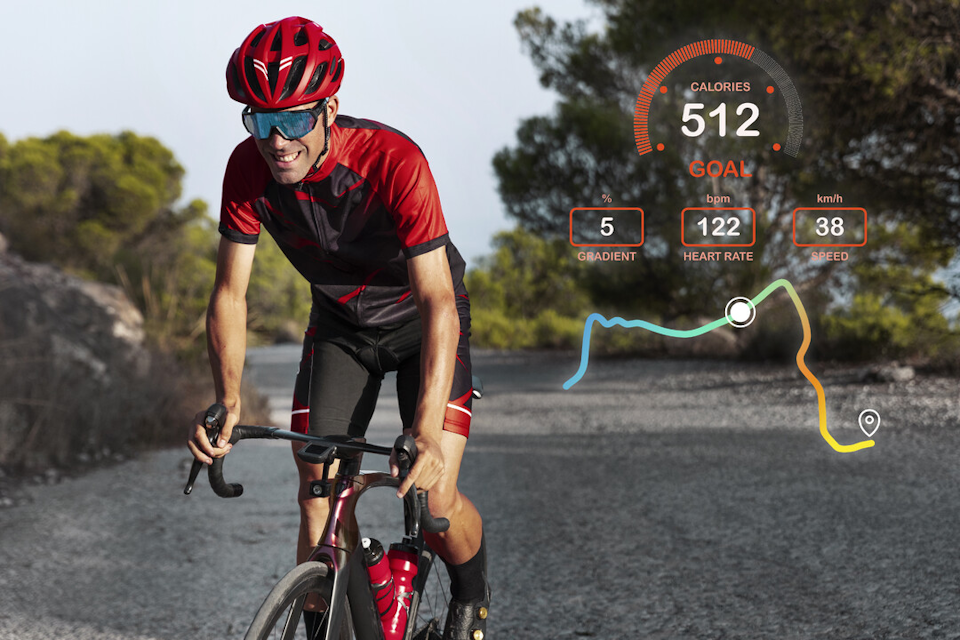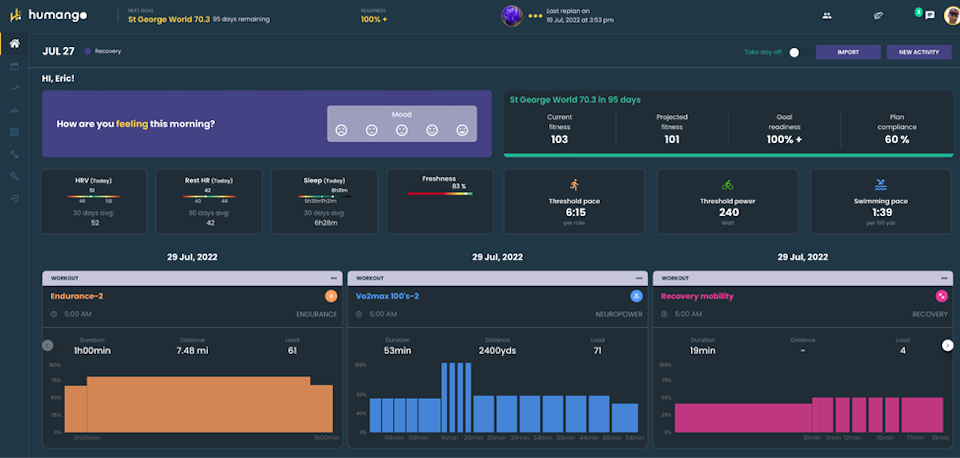How Humango uses Heart Rate Variability (HRV) to adapt your training
Heart Rate Variability (HRV) has been used in medicine for decades to identify current or potential health problems ranging from heart conditions to mental health issues like anxiety and depression. More recently, HRV has become one of the most reliable measures of rating an athlete's recovery

While ancient Greek physicians first discovered how to measure pulse rate, it wasn’t until the 18th century that pulse rates could be accurately assessed. After the invention of the electrocardiogram (ECG) and advances in digital signal processing techniques in the 1960s, clinicians and researchers could finally measure HRV.
Covered in this blog:
- What is Heart Rate Variability (HRV)
- Common influences on HRV
- Why HRV is important
- How to record HRV
- How to interpret the data
- Best practices
- Humango and HRV
- The Humango HRV interface
- How Humango uses HRV
What is Heart Rate Variability (HRV)
An electrical pulse controls your heartbeat, and this electrical pulse is what an ECG records. As our heart doesn’t beat at a constant rhythm — it varies based on physical activity levels and multiple other factors — HRV is the difference we measure.

The shape of the ECG data is split into sections called the QRS complex. To avoid overloading you with unnecessary information, we only focus on the R — the peak of each (displayed in the diagram above).
To measure HRV, we calculate the difference between each R interval, a measurement known simply as the RR Intervals. To determine your normal range, we look at your average RR intervals over time. Once we establish this baseline, we can start looking at daily fluctuations as an indicator of your training readiness.
Pro tip: Don’t waste time comparing your HRV with anyone else’s. Your HRV is as unique as you are. Many factors could cause different HRV readings, genetics being one of the most common. You’ll gain the most benefit from a training plan based on the trends in your own data.
Common influences on HRV
There might be hundreds, but here are some of the most potent factors that influence HRV:
- Training
- Competing
- Diet
- Sleep
- Stress
- Travel
- Drug use (including prescription)
- Alcohol use
To keep it simple, anything that challenges your body's natural homeostasis (the normal equilibrium that your body will try to return to) can impact your HRV. Knowing this can help you assess any unexpected changes or variations.
Why HRV is important
When it comes to endurance and athletic training, we monitor HRV because it gives us the most valuable information about how to train. On the days when your HRV is within the normal range, you can follow your usual training plan. On days where your HRV is lower than usual, you might be better off avoiding high-intensity training and focusing on your recovery.
One of the most important — but often overlooked — reasons HRV matters is that it can be a key indicator of the stressors affecting your recovery and, in turn, your training and racing performance.
To take an extreme example, consider what your HRV does after a night out where you get drunk, make poor food choices, and sleep considerably less than normal. If you are new to HRV, you would see an HRV significantly lower than your normal range. Of course, common sense tells you that you’re not going to train well after a night like this. So whether you’re measuring your HRV or simply listening to your body, taking an easy day would probably be the best approach.
For a less extreme example, you might be able to start looking at your HRV on certain days as an indicator of an opportunity to improve your recovery. If you have extensive team meetings on Monday and always have a poor HRV on Tuesday, you could move key sessions away from Tuesday. If that’s not possible, you could look for creative approaches (leisurely walks, meditation, etc.) to lessen your body’s response on Mondays.
How to record HRV
There are plenty of devices and apps to record your HRV. A Google search or recommendations from friends can be equally useful for finding the option that works best for you. The focus of this section is to ensure you get the most accurate measurement possible.
Some wearable devices are designed to be worn all day, every day. This is great, as they will give you valuable feedback on the most stressful parts of your day. It might be obvious that your heart rate will be elevated during training. Still, it’s worth noting that confrontations with co-workers, your daily commute, and even pleasant surprises throughout the day can cause your heart rate to increase. With your HRV data, you can learn how to reduce the influence of negative stressors and understand the impact of positive events.
For those who are only tracking HRV, the most important factor to remember is to wear your device when sleeping, as the best time to measure your HRV is before waking up.
HRV best practices
To get the most benefit from tracking your HRV, here are some best practices to follow:
- Aim to record your HRV daily, but at least five times per week
- Gather data at the same time every day (before you wake, if possible)
- Follow your device’s user guide
- Maintain your device: keep it charged, clean, and working well
Humango and HRV
At Humango, we work hard to help you enjoy the easiest and most accurate training experience possible. That’s why we integrate HRV into our training methodology.
The Humango HRV interface
The screenshot below shows you where to find your HRV data on the Humango homepage.

If you navigate to your homepage, you can view all of the health metrics you’ve recently recorded. The screenshot above shows measurements for HRV, Rest HR (resting heart rate), and Sleep. This combination gives you a snapshot comparison of your current and historical data.
For a more detailed view of your health metrics, click the Trends button on the left side of the screen and scroll until you get to the Health Metrics graph. Click this to open your personal history, including changes in your health metrics, as displayed by the screenshot below.

How Humango uses HRV
When you’re healthy, managing stress well, and staying within your normal HRV range, we don’t need to adjust anything. Just stick with your regular training plan! However, when fatigue shows up via HRV readings lower than your normal range, it’s a good idea to make some adjustments.
To make life easier, Hugo will ask you if you want to adjust your training. Rather than automatically making changes, Huge will ask you if you’d like to create a new plan. Of course, it’s your training plan, so Hugo always leaves the decision up to you.
With this dynamic control, you will have full adaptability and the ability to adjust your training plan based on how you’re feeling. AI training expertise combined with personal control — that’s what makes Humango a world-class training experience.
Coach Pav
Coach Pav is an Amazon #1 New Release Author and a coach to clients who have set world records (Mark Beaumont), earned their world champion jersey (Steve Bate MBE), and won ultra-cycling events (Matt Seward and Thomas Becker).
Mostly, his clients are those riding a Gran Fondo or two, and some are even riding his personal favorite: the Maratona dles Dolomites.
